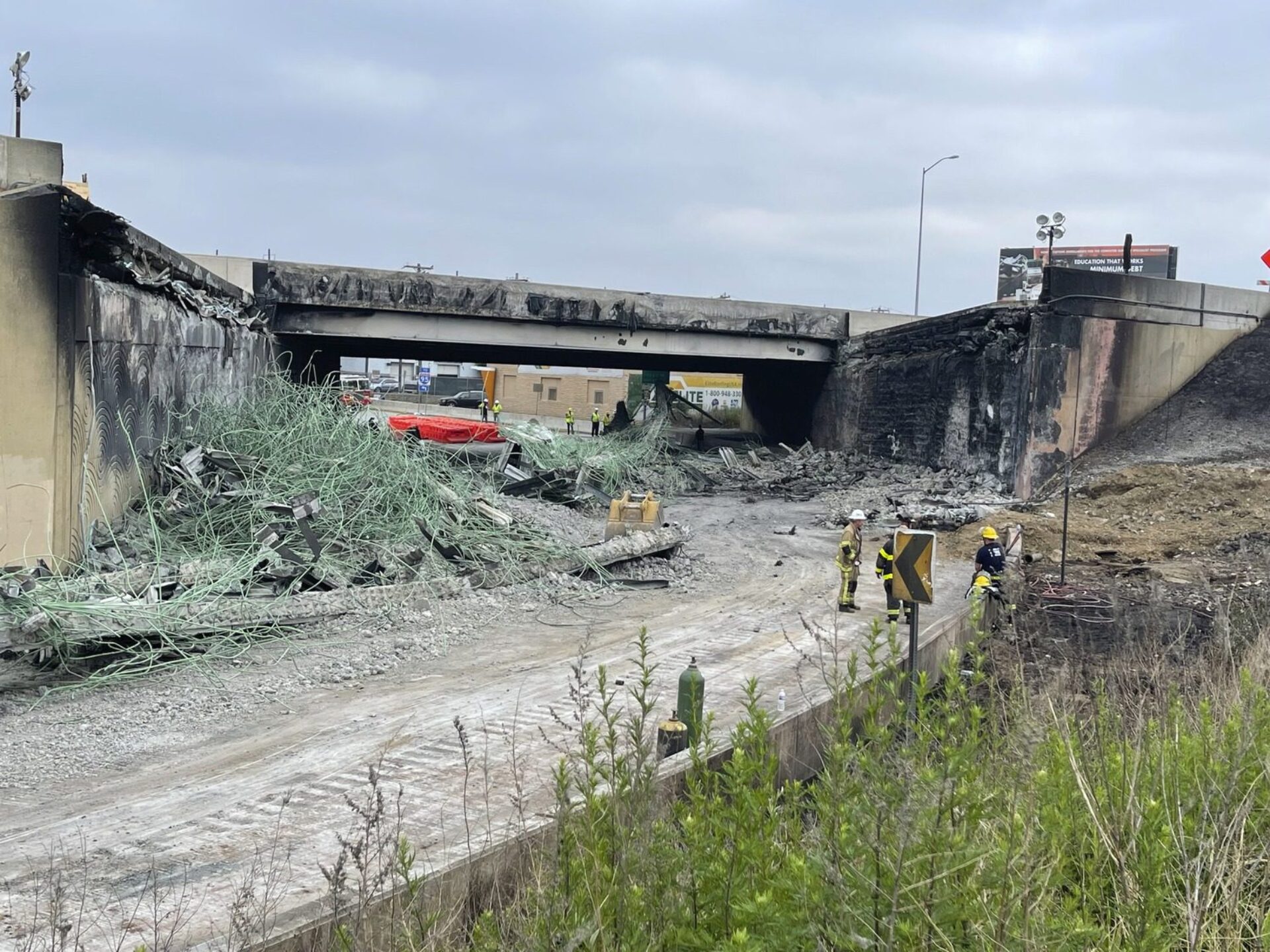
Location Philadelphia, PA
Client Pennsylvania Department of Transportation
Services Construction Management
Project Value Confidential
Hill has been providing construction management services for the overall reconstruction of I-95 since 1999. Over the years, Hill teams have supported multiple sections of highway reconstruction throughout the Philadelphia area, as well as several emergency construction projects. Following the collapse of a section of I-95 caused by an accidental tanker truck fire beneath an overpass, PennDOT mobilized the Hill team working on the ongoing Cottman-Princeton Interchange (CPR) Project to support an emergency reconstruction project to replace the destroyed section.
The collapsed overpass comprised a section leading to I-95’s northbound Cottman exit. The fire also compromised the structure of the adjacent southbound section. The underpass beneath the collapsed section comprised part of the highway’s two-lane northbound exit, which hooked around under I-95 and continued down Cottman Avenue. The collapse took out not just a major artery for Philadelphia, but also a critical piece of infrastructure for the entire East Coast, impacting commerce on a national level.
The overpass and ramp destroyed by the fire were rebuilt several years ago under a $212 million phase of the CPR Project. Hill served as construction manager on PennDOT’s project team and helped manage work to rebuild this structure. Hill’s experience on the initial rebuild and the Hill team’s understanding of the highway’s as-built conditions were critical in helping PennDOT reopen the impacted segment of I-95 to traffic less than two weeks after the incident.
Following the collapse and rapid mobilization of the construction management team, Hill professionals identified and distributed original plans, shop drawings, as-built documents, and other relevant documentation from the previous phase of the CPR Project to the Federal Highway Administration (FHWA); the Bureau of Alcohol, Tobacco, Firearms, and Explosives (ATF); the National Transportation Safety Board (NTSB); PennDOT; and other responding parties. Hill also worked with PennDOT to immediately mobilize the CPR Project contractor working adjacent to the collapse, enabling a rapid demolition of the damaged overpass and facilitating investigation of the incident. In addition, Hill worked with the original designers to assess the damage and collaborate on an immediate, temporary solution. During the installation of the temporary solution—a paved roadway atop lightweight, foamed glass aggregate—Hill maintained a constant on-site presence to support the project team. This included:
Following the reopening of the highway, Hill supported the long-term repair, which comprised the reconstruction of the highway as it had originally been constructed with a few minor upgrades to steel components per code updates. The original design involved the construction of an external set of northbound and southbound lanes, followed by the construction of an interior, adjacent set of northbound and southbound lanes. In November 2023, the team completed construction on the exterior lanes, enabling the demolition of the temporary roadway and the commencement of construction on the interior lanes. In May 2024, less than a year after the accident, the project concluded with the completion of the new interior lanes.
Throughout the permanent rebuild, Hill coordinated construction activities with the contractors working on the emergency rebuild and the adjacent CPR project by keeping communication channels open, scheduling deliveries and construction activities requiring heavy machinery to prevent conflicts, and reviewing safety plans and monitoring for adherence. Hill also helped manage public relations with the neighboring business owners and residents by making information readily available to the community, keeping entrances to local businesses and residences completely clear of construction vehicles and materials, and providing signage or making space for signage to ensure passersby knew local businesses remained open.